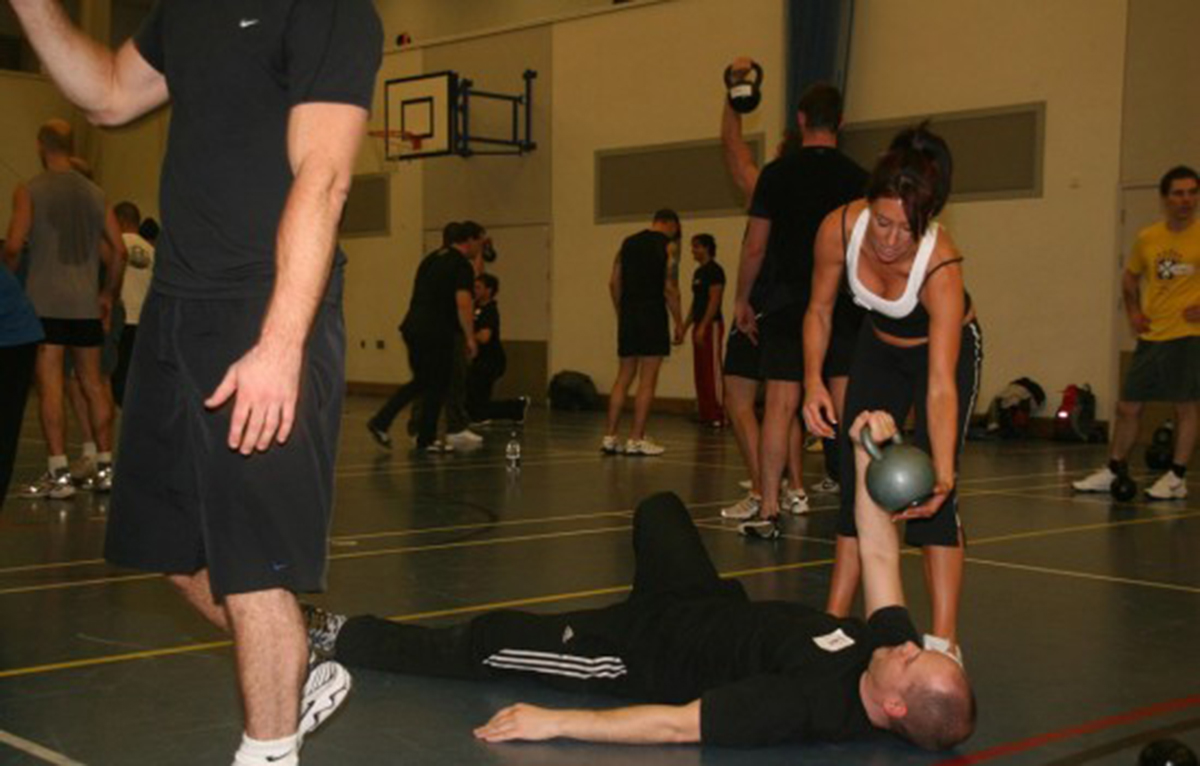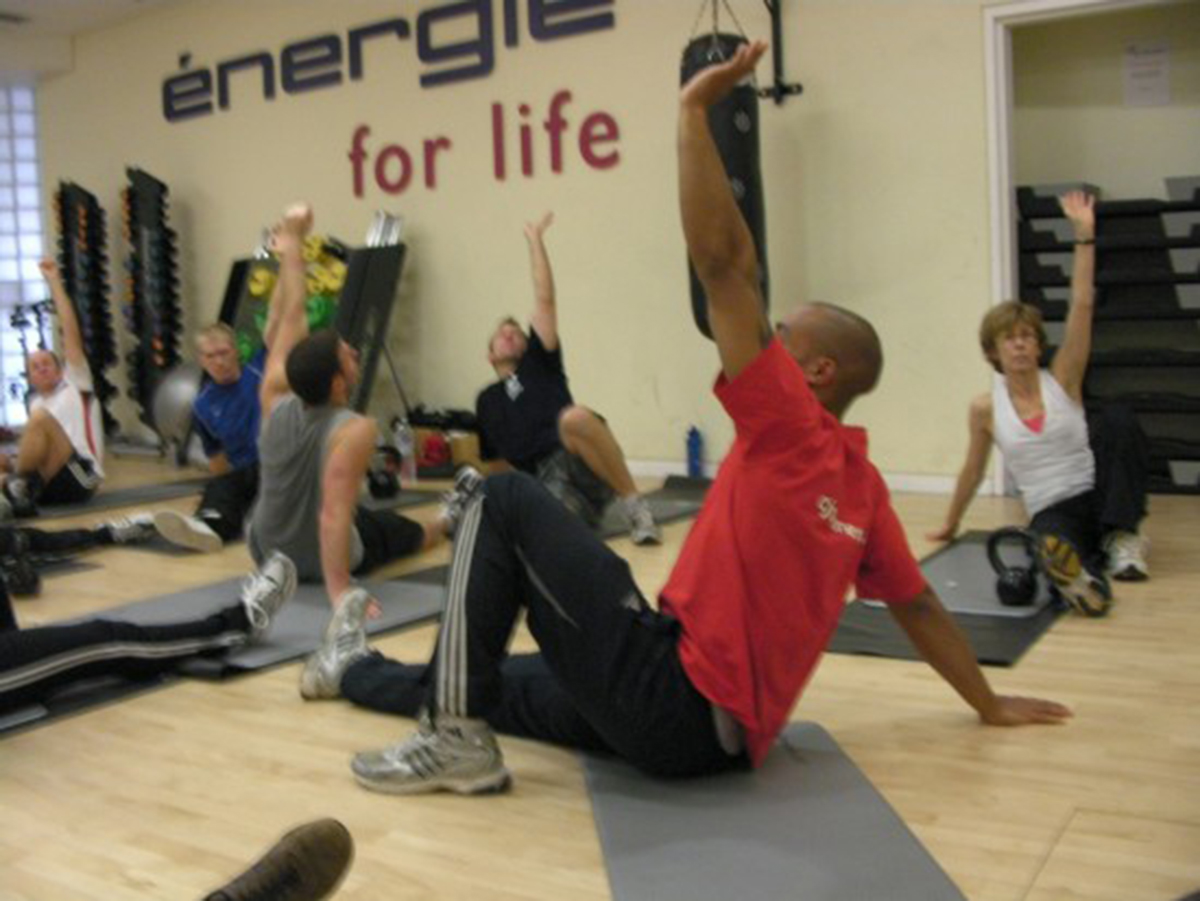Most people don't reach for a shoulder exercise that's actually good for the shoulder until they have a shoulder injury. That's partly because the shoulder is overlooked in terms of 'vanity muscles,' and partly because it's misunderstood anatomically.

A reasonably flexible person can touch the back of his own head with the back of his hand; if our shoulders were built like our hip joints we wouldn't have the fine motor control we do. As a result of this, though, the shoulder is inherently unstable.
Many neck and back problems are really shoulder problems, at least in part.
When we add in the postural problems many of us develop and the injuries we pick up in throwing sports, especially, it's no surprise that injuries involving or originating in the shoulder are so common.
Yet, the exercises that are designed to 'rehab' the shoulder are often ineffective.
There are two major problems with traditional rotator cuff exercises for rehabbing shoulders: they do the wrong thing and they do it badly.
Your rotator cuff is meant to modulate the rotation of your humerus in the glenoid joint; it's meant to reduce movement, for the most part (supraspinatus does do the first few degrees of abduction, yes, but for the most part...).
And traditional rotator cuff exercises don't even produce the results they're supposed to for most people.
They're geared towards people recovering from major traumatic injuries or surgeries, and they work there, but for most of us, we don't have major traumatic injuries; we have complex ongoing overuse, misuse and postural injuries. Again, it's the wrong answer.
So what's the right answer? Well, it isn't to just keep banging away at what you're already doing and hope your arm doesn't fall off.
What's needed is a functional exercise that teaches the shoulder to both move well (mobility) and stay put (stability) at the same time.
Outside the subject of this article, exercises that fit the bill are deadlifts, swings and pull-ups, all of which have reduced shoulder pain in people I've trained with; if you're strong enough, muscle-ups can be a big help too. But if your shoulder is really playing up, maybe you need some TGUs in your diet.
What we're interested in here, though, is the way a Get-Up forces the shoulder to stay both stable and mobile.
A Get-Up will take you from a lying position with your arm extended overhead to a standing position with your arm extended overhead. You won't bend your arm all the way through the movement. So your shoulder will have to remain solid and stable while also accommodating movement, under a load.
That's perfect for improving shoulder function, but the real kicker is what's happening with the other shoulder.
You'll be using your non-weight-bearing arm to drive part of the movement, meaning that you're stretching out your shoulder girdle as you build strength there and more importantly, you're learning to create contraction right through to the floor. There's nothing quite like it for building or rebuilding shoulders.
Read More: Cure Shoulder Pain- 6 Top Secrets to End Shoulder Problems Revealed
How do you do a Turkish Get-Up?
Get-Ups happen in stages. Walk through them without a weight first, using this article as a guide, and when you do start using a weight, start with a small one. Pick up one that seems too small, put it down and pick up another, smaller one. Seriously, doing a move like this with a heavy weight is a great way to get a new injury to go with your old ones. Build up to heavier weights slowly; you can do Get-Ups with significantly heavy weights but I wouldn't recommend starting there.
The TGU is typically performed slowly and with control, which allows for the muscles around the shoulder to engage fully and work through a full range of motion. This can be beneficial for rebuilding strength and mobility in a damaged shoulder. As you perform the TGU, your scapula (shoulder blade) moves in coordination with your arm, which helps to improve scapular control and coordination. Good scapular movement is essential for healthy shoulder function.
The varied movement patterns in the TGU improve proprioception—the body's ability to sense its position in space—which is important for joint stability and coordination, especially post-injury. As the exercise requires balance and coordination, this can help improve the neuromuscular control of the shoulder girdle.
Turkish Get-Up Overview
You'll start lying on the floor on your side. Then you'll roll onto your back and press the weight overhead, push yourself up on one hand and one foot and put the other foot behind you. Move from a kneel into a lunge and stand up.

Stage One:
Lie on your left side. Your knees should be drawn up, and the weight should be in your left hand with the right hand wrapped over the handle and the left hand. Use your left leg and core to roll onto your back, and pull the weight into the centerline with your right hand. Use a continuation of the rolling movement to press the weight out overhead vertically. From this point on, do not take your eyes off the weight.
Stage Two:
Push down with your left leg and roll over onto your right elbow. Continue the movement and use your core and legs to get your right hand under you. Your upper body should be extended in both directions, with your backside on the floor and your left leg poised to drive the movement from now on.
From the moment your elbow touches the floor, you're approaching having the weight more vertical.
So your left arm should be high, with your shoulder pressed right into your ear (that's your shoulder in your ear, not your ear pushed into your shoulder!). Your right shoulder should be packed down and back. Trigger your lats and traps and tighten your upper back; imagine driving the floor away with your upper back.
Stage Three:
This is the part where, if the weight you chose is too heavy, you should now admit it and get a lighter one so you don't end up wearing it on your head.
Keep looking at the weight and take the whole weight on your right hand and left foot. Pull your right leg in and then move it through the gap between your left foot and right hand, and put it under and behind you. Kneel on the right knee.
Stage Four:
Check that your hips are under you, brace your core and look at the weight. Rotate your right foot to get the ball of your foot on the floor and stand up into a lunge, then use the lead leg to pull yourself upright to a full standing position.
Read More: Rotator Cuff Problems: Frozen Shoulder
Try programming a few Stage Twos before doing a few reps of the whole movement. Alternatively, try doing your Get-Ups with a racked weight rather than an overhead one to emphasize the grounded shoulder more.
Pack your neck, brace your core, look at the weight and go for quality, not high reps. Good luck!
- Photo courtesy of Ken Liu by Flickr : www.flickr.com/photos/klfitness/1294228634/
- Photo courtesy of Ken Liu by Flickr : www.flickr.com/photos/klfitness/2077942950/


Your thoughts on this